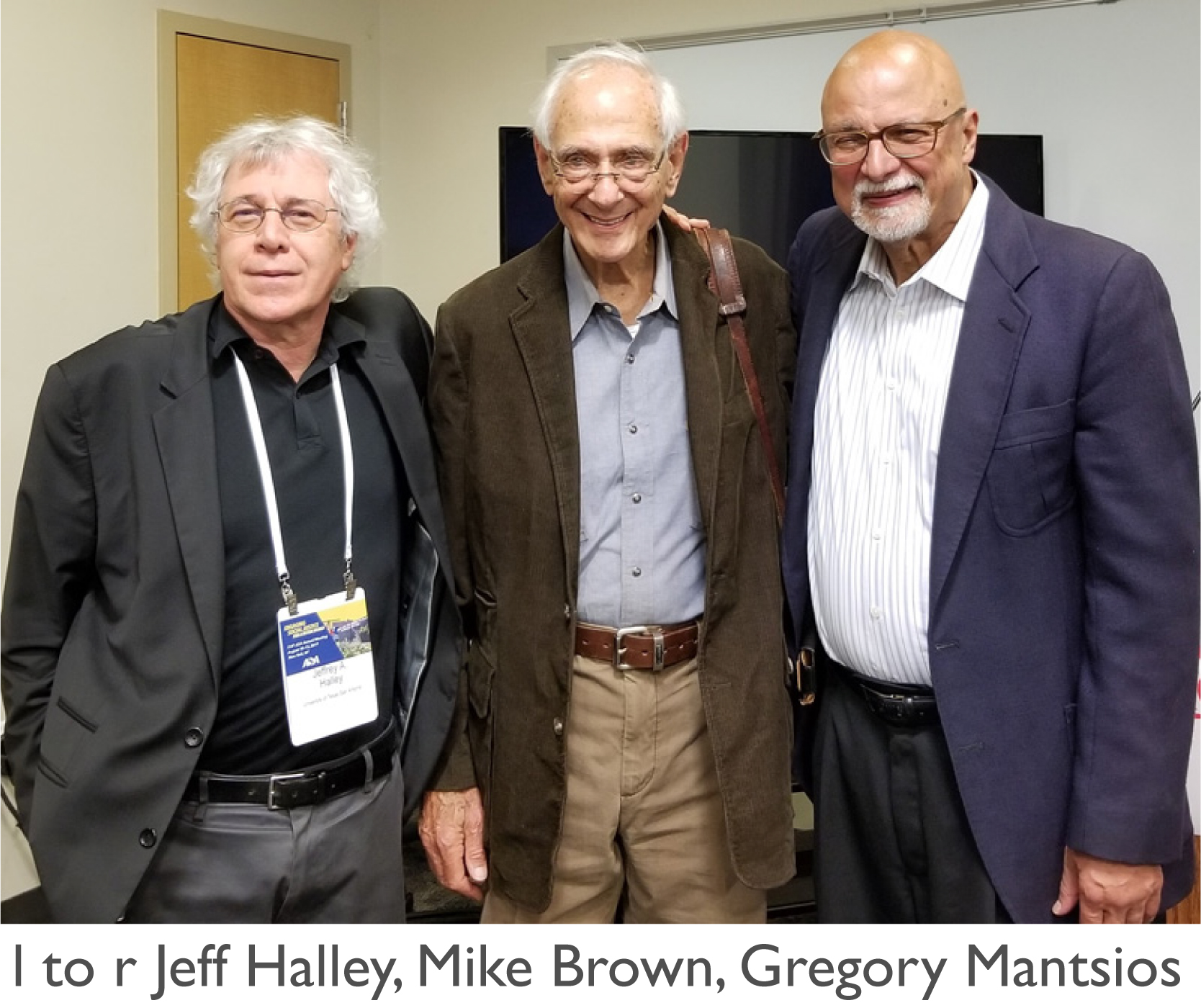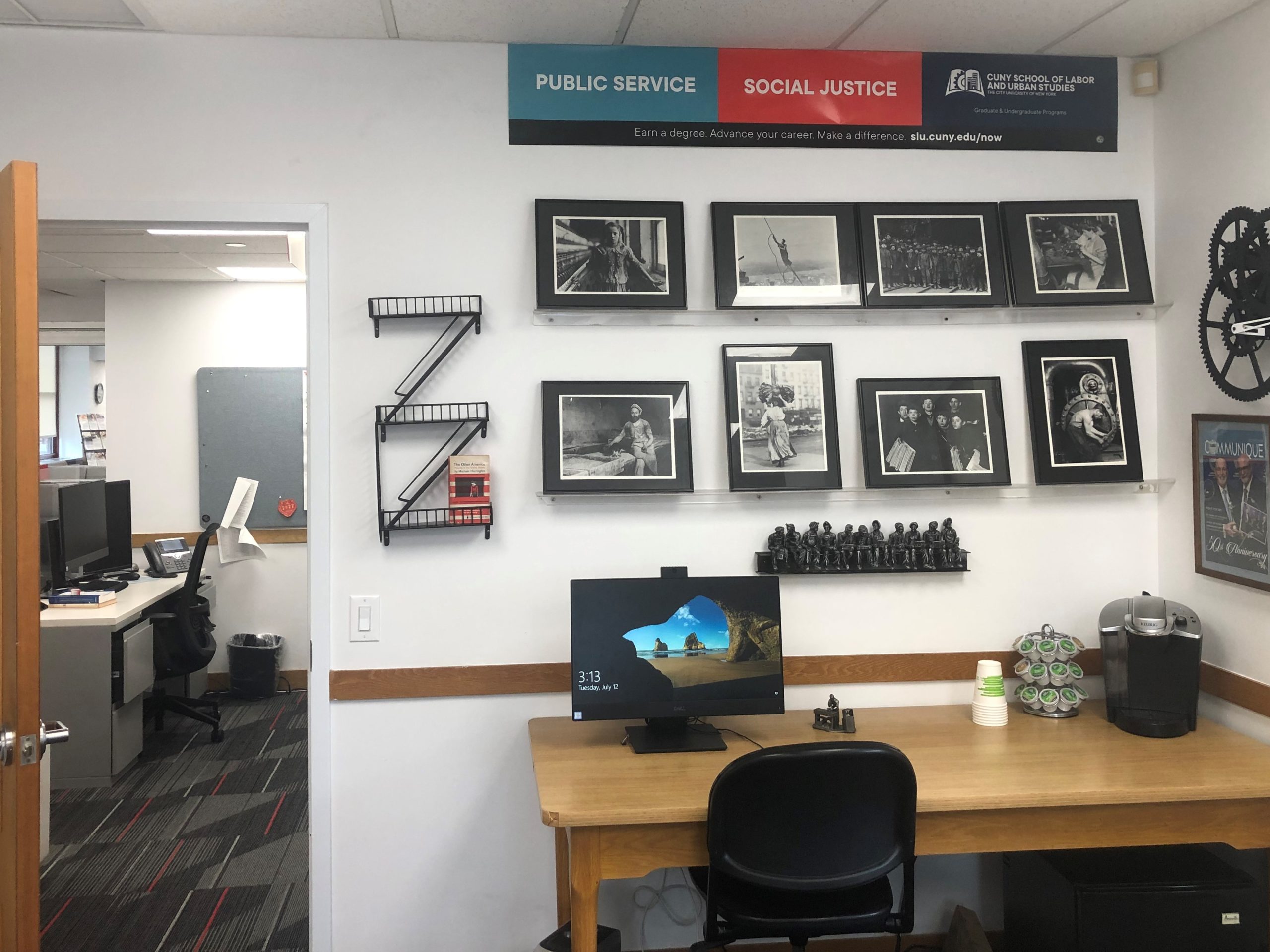
Changing Workers’ Lives through Education
Gregory Mantsios’s appointment in January 2018 as founding dean of the CUNY School of Labor and Urban Studies (SLU), following his 34 years of service to CUNY that began at Queens College, signifies the better part of a lifetime dedicated to using the tools of education to help working people get ahead.
The programs he established at CUNY, and before that at Empire State College/SUNY, have provided thousands of union members and adult learners—many of them non-traditional students from poor and working-class backgrounds—with the means to better their station in life by earning college degrees.
As Mantsios freely observes, but for an historic event, he might not have completed a college degree himself, given the challenging circumstances of his early life.
“I grew up in Jamaica, Queens,” he explains. “I was raised by a single mother. My father had died when I was an infant. It was a rather poor area: I lived on a block with single-room occupancy housing and a lot of alcoholism that later went over to drugs.”
“I was kind of a street kid,” he continues, “but I managed to do well enough in Jamaica High School that I got myself into Queens College’s evening program, which was at that time called the School of General Studies.”
Evening Matters
Mantsios took his first semester of classes evenings at John Bowne High School while working odd jobs during the day. “I was a custodian. I was a stock boy. I was a clerk. I was selling beer at Shea Stadium,” he says. “It wasn’t easy.”
Despite his initial excitement about beginning college and most particularly, the opportunity to take a course in Western civilization, he says, “I think I was just too tired.” He recalls long days and bus rides from Jamaica to campus on Parsons Boulevard. “I was bored to tears. I got a D in that course, and that was the lowest point for me. I was on the verge of getting thrown out or quitting. That was in 1970 at the end of my first year.”
Mantsios’s quandary was to be short-lived as his personal concerns were subsumed by one of the pivotal events of the Vietnam War era: the deaths of four students shot by members of the Ohio National Guard sent to Kent State University to quell anti-war demonstrations.
Like most American college campuses at the time, Queens College was riven by intense feelings about the war, but Mantsios says he was largely apolitical. When a member of Students for a Democratic Society asked him to sign a petition to prevent the Reserve Officers’ Training Corps from recruiting on campus, he argued that he knew people who had enlisted in military service to get out of their neighborhood. Kent State changed everything.
“There was this huge rally right after the killings at what used to be the old Student Union building,” he says. “I was on the fringes watching. This guy named Mike Brown came up to the microphone, and he gave one of the most powerful speeches I had ever heard. I was so moved by that.”
Rallying for Change
Brown concluded, Mantsios recalls, by asking everyone to walk out of the campus onto Kissena Boulevard and the Long Island Expressway, and march into Manhattan to join a giant rally at Washington Square Park. “Somehow, I was so outraged and so inspired, I joined that rally. It was so unlike who I was, but he just, just grabbed
Mantsios suddenly realized he was due in ten minutes at the job he had then, transporting jewels in a knapsack on the subway between a jeweler in Astoria and 47th Street in Manhattan. Calling his boss to explain his absence, he made a declaration that was stunning to both himself and his boss: “I’m marching against the war!” Stunning, Mantsios explains, because it was so completely out of character with who he was at the time.
“I did that and it just changed my life: I went back and decided I was not going to drop out. I was going to carefully select the courses that I was going to take, and I was going to sign up for this guy named Mike Brown in sociology. I took four courses, two with him and two with another sociologist named Jeff Halley. I finished that next semester with straight As. I finished the rest of my career at Queens College without getting anything less than an A from that point on. So, that was just this remarkable turnaround.”
“My trajectory before Queens was very different from where I wound up. It was that moment [Mike Brown’s speech], but it was also the quality of the faculty. There were so many inspiring people,” he says, citing in addition to Brown and Halley, John McDermott, whose philosophy classes were so popular and crowded that students would be lucky to find a place sitting on the radiator near the window.
As Mantsios’s commitment to opposing the war grew, he eventually became involved in the Student/Faculty Coalition, which allowed him to get to know faculty members in a more personal way. Two of them, Brown and Halley, became lifelong friends,.
Digressing from his recollections, Mantsios notes that just before the pandemic’s closure of campus, he received a call from Halley, who said he’d been asked to present a distinguished career award to Mike Brown. The award was bestowed by the Marxist Section of the American Sociology Association; not entirely by coincidence, it was conferred at an event held at the CUNY School of Labor and Urban Studies. “So, there we were, the three of us after 50 years!”
Mantsios received his BA in Sociology, following which he and six fellow student activists decided to form an Astoria-based collective, where they would share space and do community organizing. One of their faculty advisers, however, convinced him and two other members of the group to return to QC to pursue master’s degrees and join something called The University Year for Action.
“It was like the domestic Peace Corps,” says Mantsios. “We enrolled In the Urban Studies’ master’s degree program which was chaired by Marilyn Gittell, who was a prominent education reformer and very dynamic. She, too, became a lifelong friend. Queens College was, and still is, such a vibrant place.”
Teaching Matters
Shortly after earning his master’s degree, Mantsios began teaching as an adjunct. Then he received a call from Halley who had moved on to William Paterson University in New Jersey: Would Mantsios be interested in teaching full-time at William Paterson for a faculty member who had become ill? Mantsios accepted the offer and says the job “was really how I entered into the academy.”
Within a couple of weeks, another event proved pivotal to Mantsios’s career trajectory: The faculty called a strike. He volunteered his community organizing experience to help, and soon found himself becoming secretary/treasurer of the faculty union. ”It’s a long story,” he says, “but that’s how I got into labor studies.”
While his efforts contributed to the strike’s success, they had the unintended consequence of getting Mantsios fired by the administration for his union activities. A lawsuit to retain his position failed. “I lost the case. I was out of a job, but I was really fired up about labor studies,” he says. He moved on to Empire State College, eventually becoming director of its labor studies program for more than 1,200 electrical workers.
In 1984, Mantsios reached out to some of his old friends among the Queens College faculty, which led him to set up a meeting with a faculty member and two union leaders to discuss creating a labor studies program at the college.
“We met at the bar on the other side of the Long Island Expressway,” he recounts. “We literally, like you read in the books, outlined on the back of a doily an idea for starting a labor program at Queens College. . . The garment workers union offered to provide a quarter of a million-dollar endowment to support their workers who wanted to go back to school, basically to get out of a dying industry in New York.”
Mantsios recalls that Queens College’s president at that time, the late Saul B. Cohen, was supportive but skeptical, disbelieving that this scenario was ever going to happen until leaders of the Amalgamated Clothing Workers Union showed up with a photographer and handed over the check. “And that,” he proclaims, “was the beginning of the labor program at Queens College.” (In 2005, the program was named the Joseph S. Murphy Institute, in honor of the former QC President and CUNY chancellor who supported labor and worker education.)
Mantsios continued reconnecting with old faculty friends and meeting new faculty members. He became part of something called the Monday Lunch Group, typically some 30 to 40 faculty members who met every Monday in the new Student Union building to discuss a topic which was never announced in advance. “There were five or six people who were just incredible superstar intellectuals,” he observes. “They were just the most stimulating conversations, and we all grew from it.”
There was also, he recalls, a small group of about five or six, including Michael Harrington, who had dinner together Monday evenings because they all taught night classes. On one occasion, all were asked to cite the book that had most influenced them. Mantsios, the last to answer, turned to Harrington and named Harrington’s The Other America, which he remembered reading it cover to cover in high school while sitting out on his fire escape. The book, he told Harrington, made him realize that he wasn’t alone in being poor.
“To this day, I have a three-dimensional replica of a fire escape in my office given to me by a friend, and in that replica, I have a copy of The Other America. Every day, I walk into and out of my office and there’s that replica to remind me of my experience at Queens College. Despite all the attention to middle-class values in the ’50s and ’60s, [Harrington’s] writing about the other America affirmed my own experience and activated a deep commitment to advocate for the dispossessed.”
One could just as readily observe that for the last four decades, Mantsios has brilliantly channeled the inspiration he took from Harrington and others he encountered along the remarkable trajectory of his life into writing about working-class issues and creating programs that have made a huge difference in the lives of generations of working-class people.


Building Futures for Workers
His greatest professional accomplishment, he says, “is helping to establish a CUNY school that is dedicated to public service and social justice and is serving the needs of those who aspire to becoming the next generation of labor and community leaders.”
The Murphy Institute—now an entity within SLU—places and supports working adult students pursuing career advancement in a wide variety of fields at other CUNY campuses. Over 400 Murphy students are currently enrolled at Queens College.
Thanks to effective public engagement strategies, the influence of SLU’s programs extends beyond CUNY. Its national publication, New Labor Forum: A Journal of Ideas, Analysis, and Debate, has more than 11,000 subscribers, and the school’s annual conferences, monthly forums, television show, and podcast reach an audience of over 10,000. “We address a wide-range of labor issues and attract a large audience of scholars and activists, many of them part of the effort to revitalize the labor movement,” Mantsios says.
Reflecting on the evidence of that revitalization as seen in recent successes organizing units at corporate behemoths Starbucks and Amazon, Mantsios notes that SLU is about to offer a new credit-bearing certificate in organizing. “Our students have been asking for that. . . because they want the specific skills that go into building a movement for social justice.” He adds, “That gives me hope!”

